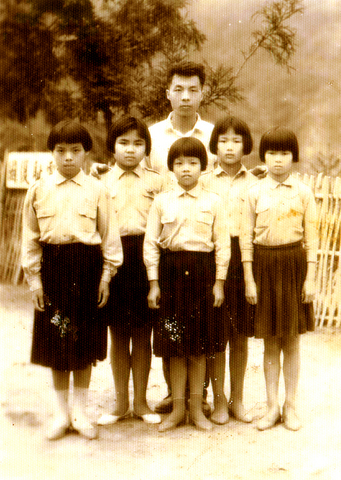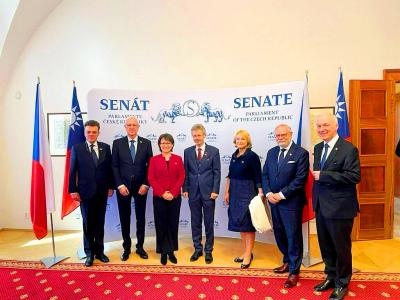The Ministry of Education's (MOE) decision this month to first ban public-school restrictions on permissible hairstyles and later lift those on shoes and socks for secondary-school students, sparked debate on whether students should be given total freedom over their appearance.
While many schools hesitated to carry out the new policy, the lifting of the hair and dress regulations has officially put an end to an outdated era and granted students the right to determine their own hairstyles and appearance.
Looking back at the history of the country's hair and dress regulations, the ban on students' hairstyles and dress was first introduced in 1969 by the ministry, and is now considered to be a relic of authoritarianism. According to hair-regulation criteria between 1969 and 1978, as provided by the MOE, secondary-school boys were required to sport crew cuts, there had to be no hair on their temples and strange hairstyles were not allowed. Girls' hair, on the other hand, had to be ear-length and neither dyed nor permed.

TAIPEI TIMES FILE PHOTO BY CHEN CHING-MIN
The ministry in 1984 issued an official dress code for secondary-school students. While there was no detailed requirements, the ministry requested that students' clothes be "neat," "simple" and "graceful."
Six months before the then-ruling Chinese Nationalist Party lifted martial law in 1987, the MOE banned hair regulations at secondary schools. The announcement stated that secondary-school students' hairstyles should be "simple, neat and easy to freshen up." But "schools can draw up their own regulations based on the above principles and opinions from teachers, students and parent representatives."
Schools continued to enforce strict rules, and rushing to get haircuts or preparing white shoes and socks the night before their schools' appearance-checkup day has remained a school memory for most Taiwanese people.
"Our director of student affairs once cut a student's hair during a hair checkup in front of everybody, because he used styling gel on his hair. My teacher even asked a barber to come to school and give each of us a haircut to make sure our hairstyles conformed to school rules," said Jimmy Chuang (
Jimmy said that while the school informed them about the MOE's policy, hair regulations continued to be enforced even though students were allowed to sport their hair a little longer. Every month at schools' morning rally, the director of student affairs or instructors would do a routine hair and dress checkup. Students who failed the checkup would be punished with points deducted from their grades.
"Having to get a haircut at least once a month was a hassle. But I think most of my male classmates felt OK with the crew-cut hairstyle," Chuang said.
"Girls hated the hair regulations more because their prescribed hairstyle gave them `watermelon heads,' and it was not pretty," he said. Years after the ministry's first official ban on hair regulations, secondary-school boys no longer need to sport the crew-cut hairstyle and girls can wear their hair to at least shoulder-length.
But most schools never gave up the authority to exercise proper discipline regarding students' appearance. It seems that most of the schools decided to stick to their guns when education officials this time around chose to stand firmly on the side of students' hairstyle rights when the legitimacy of the regulations was questioned by students in a protest last month.
Many secondary-school principals were surprised at Education Minister Tu Cheng-sheng's (
Some schools' principals called the changes a "travesty of education in the guise of democracy." A number of them vowed to maintain existing regulations.
Tan Guang-ding (
"But I do not agree that hair regulations are a violation of students' human rights. Students come to school to receive an education and proper discipline. Schools' authority over students' hairstyles should not be denied," Tan said.
Facing a cool response from school principals, Vice Minister of Education Fan Sun-lu (
Fan called on schools to give students the right to choose their own hairstyles, given that this is a democratic society.
"This was consistent with the idea that schools aim at teaching students to be responsible members of society by making decisions for themselves and thinking on their own," she said.
As many school principals hesitated to give up their authority over students' hair, however, hairstyle rights advocates may need to continue their fight until students can express themselves through various hairstyles without any restraints.

Prosecutors in New Taipei City yesterday indicted 31 individuals affiliated with the Chinese Nationalist Party (KMT) for allegedly forging thousands of signatures in recall campaigns targeting three Democratic Progressive Party (DPP) lawmakers. The indictments stem from investigations launched earlier this year after DPP lawmakers Su Chiao-hui (蘇巧慧) and Lee Kuen-cheng (李坤城) filed criminal complaints accusing campaign organizers of submitting false signatures in recall petitions against them. According to the New Taipei District Prosecutors Office, a total of 2,566 forged recall proposal forms in the initial proposer petition were found during the probe. Among those

ECHOVIRUS 11: The rate of enterovirus infections in northern Taiwan increased last week, with a four-year-old girl developing acute flaccid paralysis, the CDC said Two imported cases of chikungunya fever were reported last week, raising the total this year to 13 cases — the most for the same period in 18 years, the Centers for Disease Control (CDC) said yesterday. The two cases were a Taiwanese and a foreign national who both arrived from Indonesia, CDC Epidemic Intelligence Center Deputy Director Lee Chia-lin (李佳琳) said. The 13 cases reported this year are the most for the same period since chikungunya was added to the list of notifiable communicable diseases in October 2007, she said, adding that all the cases this year were imported, including 11 from

China might accelerate its strategic actions toward Taiwan, the South China Sea and across the first island chain, after the US officially entered a military conflict with Iran, as Beijing would perceive Washington as incapable of fighting a two-front war, a military expert said yesterday. The US’ ongoing conflict with Iran is not merely an act of retaliation or a “delaying tactic,” but a strategic military campaign aimed at dismantling Tehran’s nuclear capabilities and reshaping the regional order in the Middle East, said National Defense University distinguished adjunct lecturer Holmes Liao (廖宏祥), former McDonnell Douglas Aerospace representative in Taiwan. If

The Mainland Affairs Council (MAC) today condemned the Chinese Communist Party (CCP) after the Czech officials confirmed that Chinese agents had surveilled Vice President Hsiao Bi-khim (蕭美琴) during her visit to Prague in March last year. Czech Military Intelligence director Petr Bartovsky yesterday said that Chinese operatives had attempted to create the conditions to carry out a demonstrative incident involving Hsiao, going as far as to plan a collision with her car. Hsiao was vice president-elect at the time. The MAC said that it has requested an explanation and demanded a public apology from Beijing. The CCP has repeatedly ignored the desires